From fireflies to cats (seriously!), here are some real-world creatures that have the ability to emit light.
13 Incredible Photos of Animals That Can Glow in the Dark
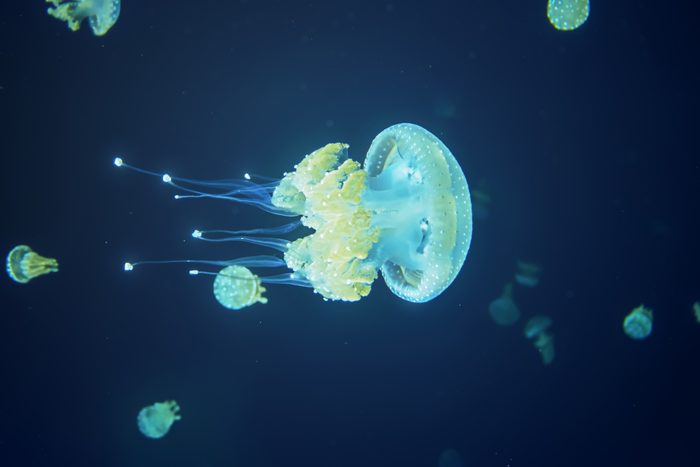
Glow, baby, glow
The idea of a living creature that can glow in the dark might sound like a spooky sci-fi experiment, or perhaps an alien civilization. But glow-in-the-dark is not reserved for man-made kids’ toys; far from it! There are several creatures with glowing properties living among us on earth (though of course, many reside deep in the ocean). Most bioluminescent animals get their light by making an enzyme called luciferin, which mixes with other chemicals to create a glow. The purpose depends on the species—some are drawing in prey, while others are sending signals to mates—but the eerie effect is the same. Plus, did you know that there are lots of beaches that can glow in the dark, too?
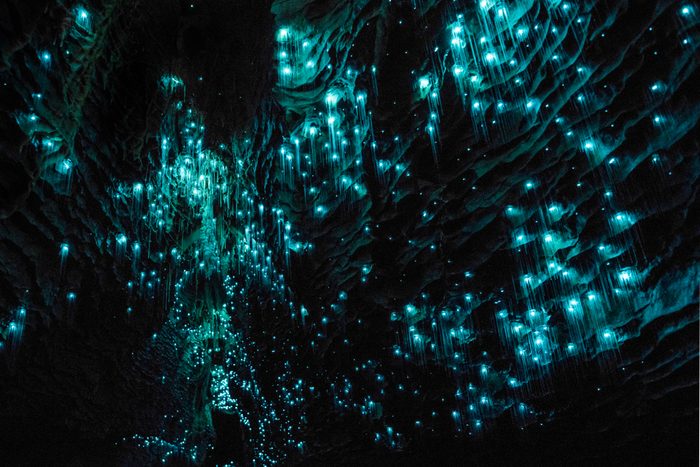
Glowworms
Head to the Waitomo Caves in New Zealand at night and you can stand under a breathtaking canopy of glowing silk threads spun by glowworms. The threads are designed to be as enchanting as humans find them—the bioluminescence attracts mayflies that get stuck on the sticky threads, then become dinner for the worms (which are technically insect larvae).
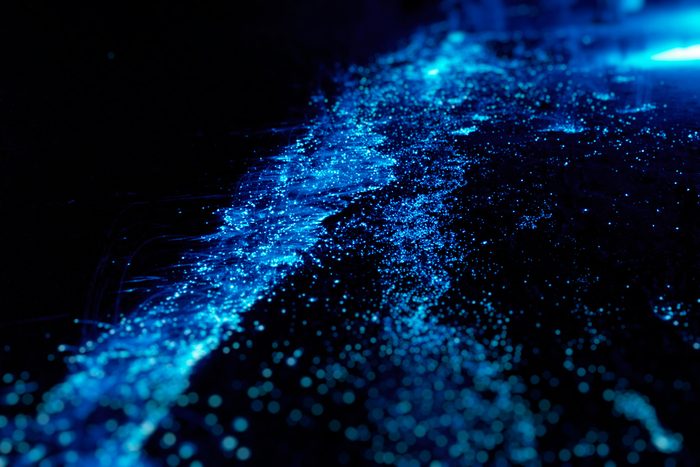
Dinoflagellates
Plankton isn’t always the most exciting creature, but some of the species of dinoflagellates that light up are another story. During the day, they create a ruddy “red tide,” but at night, the waves take on a shimmery glow from the single-celled creatures. Scientists think the light-up ability helps keep them safe. Either the predators will be scared by the burst of light, or other creatures that eat the predators will be attracted to the glow and in turn hunt the planktons’ foes.
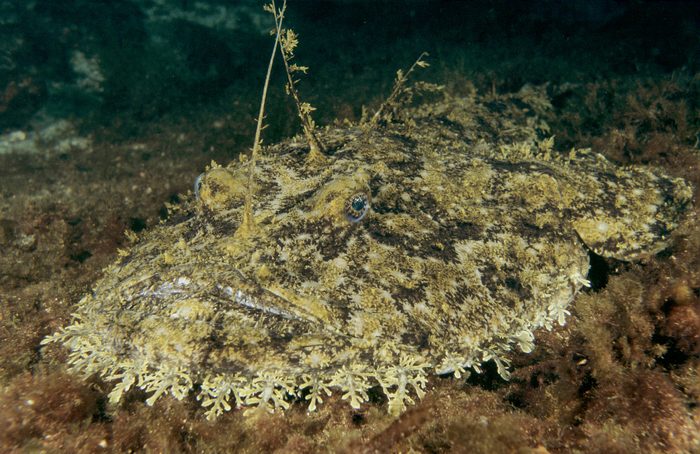
Anglerfish
Remember that low-key terrifying scene in Finding Nemo where the monstrous fish lures Marlin and Dory with a light-up orb? They never actually say that creature’s species name in the film, but it’s supposed to be an anglerfish. Freakiest of all, that is actually how they lure their prey. Only females have the lure, which glows with luminescent bacteria to attract prey within the gobbling range. But it’s not the light itself that lures the prey like in Nemo; it’s the resemblance of the lure to a worm, making the prey think they’re going to get food instead of being food. Learn about more of the weirdest deep-sea creatures.
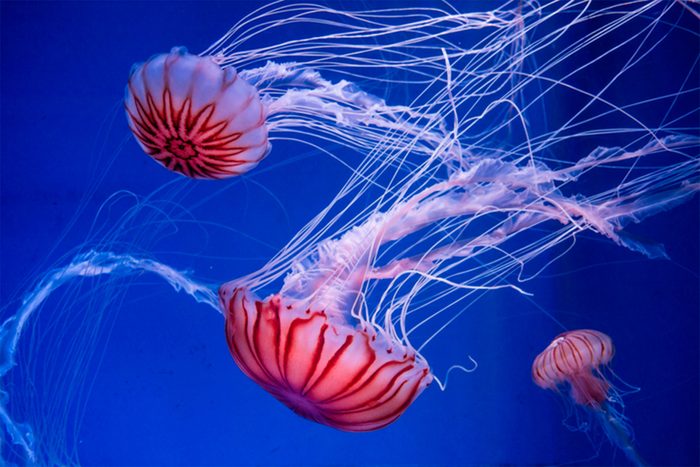
Jellyfish
Jellyfish’s spindly tentacles and translucent bodies look even more ethereal on species that glow in the dark. Deep underwater, most jellyfish emit their own light, probably to scare or confuse their predators. Some will even leave glowing slime on their predators so their enemies can’t hide.
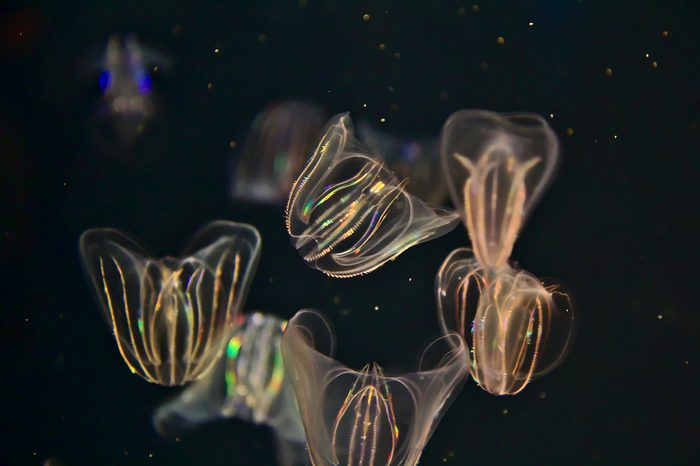
Comb jellies
Their names sound similar, but comb jellies and jellyfish aren’t actually close relatives. Instead of tentacles, comb jellies use their combs as oars to help them make their way through the water. They don’t make their own light, but when their moving combs scatter the light, they create an underwater rainbow show.
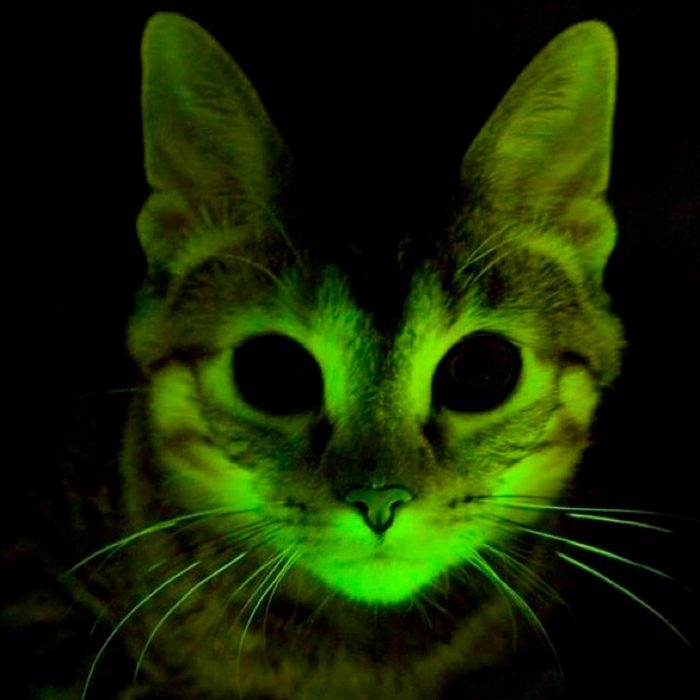
Cats
Cats don’t naturally glow in the dark, but they can with the help of science. In 2011, researchers were using cats to study HIV/AIDS but needed a way to test whether the animals would accept new genes. Their solution: Give cat embryos jellyfish genes. When the kittens glowed, the scientists knew the experiment worked. And you thought the Cheshire Cat was creepy. These 12 adorable photos of baby wild animals will make your day.
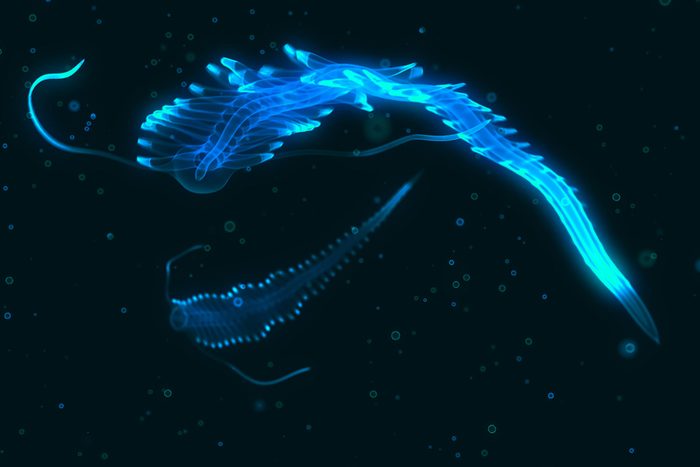
Tomopteris
These undersea worms give off light, which isn’t rare at their depths of the ocean. What does set tomopteris apart is the fact that some species give off yellow light when most bioluminescent creatures produce blue light.
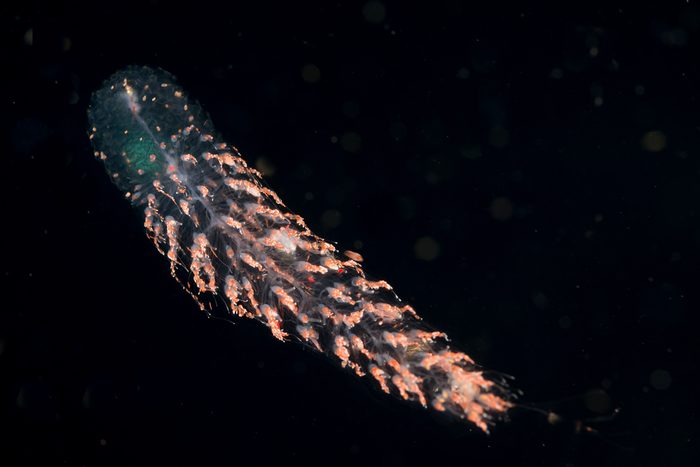
Siphonosphores
What you see looks like a single creature, but it’s a collection of thousands of individual cloned from one. The siphonosphore gives each clone its own specialty, such as hunting or digesting, making it one of the deadliest creatures in the world, and it can grow more than 100 feet long. Learn about these other 10 animals with incredible superpowers.
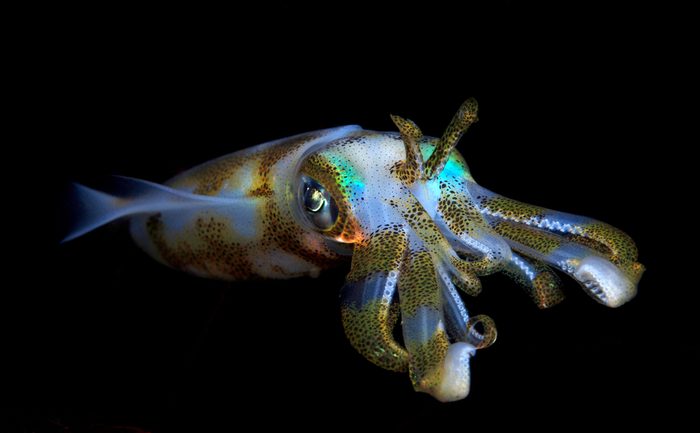
Bigfin reef squid
The color-changing bigfin reef squid can’t make their own light, but they do give off a surreal glow in the water. When the light touches them, they turn iridescent reds and greens. Some squids use their light-up powers as counter-illumination—instead of using light to draw attention to themselves, they use their bright bellies to blend in. When other sea creatures look up toward the surface, the squids blend in with the lighter water above. Can you spot the animals camouflaged in these photos?
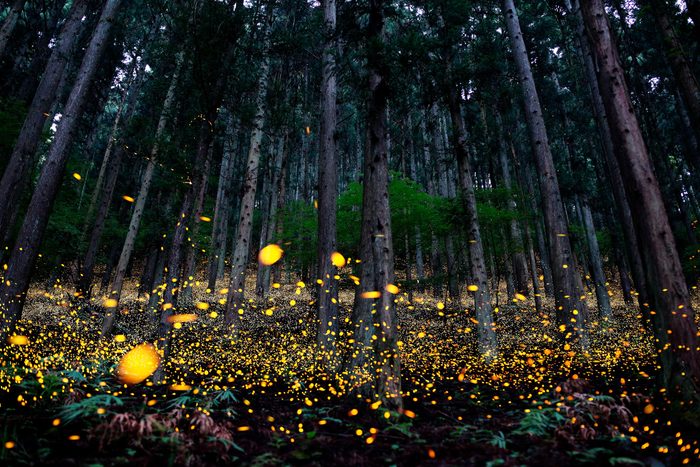
Fireflies
Firefly season is one of the most magical times of summer. When oxygen mixes with different chemicals in lightning bugs, their organs glow like a light bulb. Scientists think the brightness help ward off predators and send signals to potential mates and other fireflies.
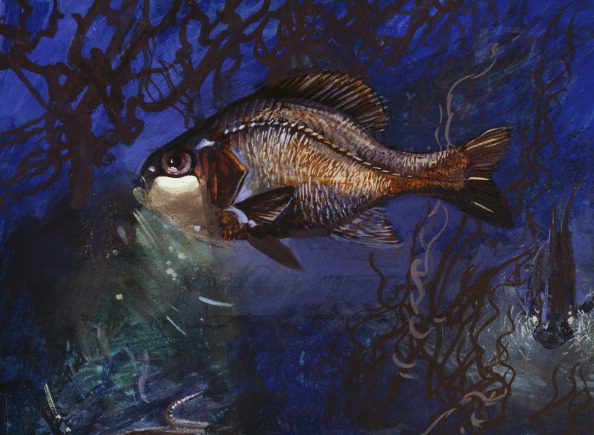
Flashlight fish
These creatures’ luminescence has earned them a nickname! (To be fair, their actual scientific name, “anomalopidae,” is quite a mouthful.) They’re also called “lanterneye fish.” Native to Australia, flashlight fish have an organ beneath their eyes containing light-up bacteria. Sounds gross, but sure looks cool! They can retract these organs or cover them with a flap of muscle to hide the light. Scientists suspect that they use the light both to attract prey and to communicate with other flashlight fish.
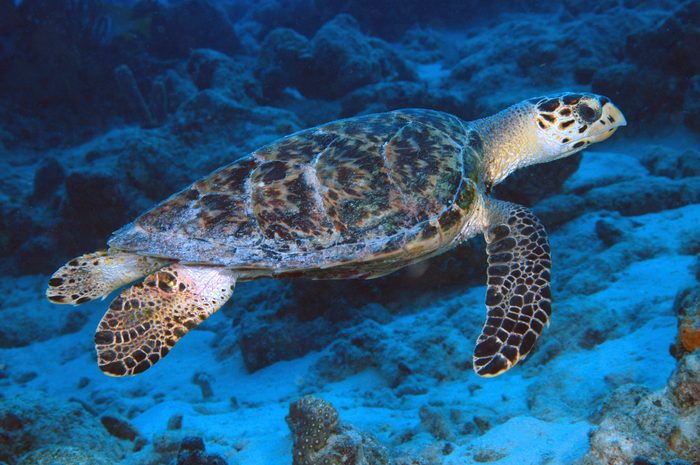
Hawksbill sea turtle
A glowing turtle?! Believe it. Its glowing isn’t usually visible to the human eye, but the process is striking. In 2015, a team of researchers encountered a Hawksbill turtle whose brightly patterned shell appeared to be glowing red and green. They observed that it was reflecting the blue light that the researchers were using, but they weren’t sure exactly how it was doing that. They theorized that algae on the turtle’s back might have been creating that effect, but scientists still aren’t sure exactly what causes it. Sadly, these turtles are endangered, in part because humans hunt them for their shells. Here are some more wild animals you didn’t realize were endangered.
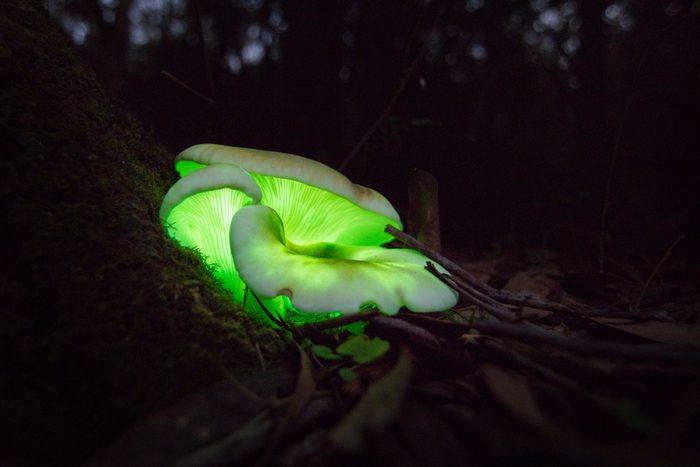
Ghost mushrooms
Animals aren’t the only glow-in-the-dark organisms. Mushrooms like these make an eerie sight in the forests of Australia. More than 90 species of fungus give off a glow, but ghost mushrooms are among the most psychedelic, with a soft green light bright enough to act like a reading lamp. Find out which 23 well-known “facts” about animals are totally false.



















